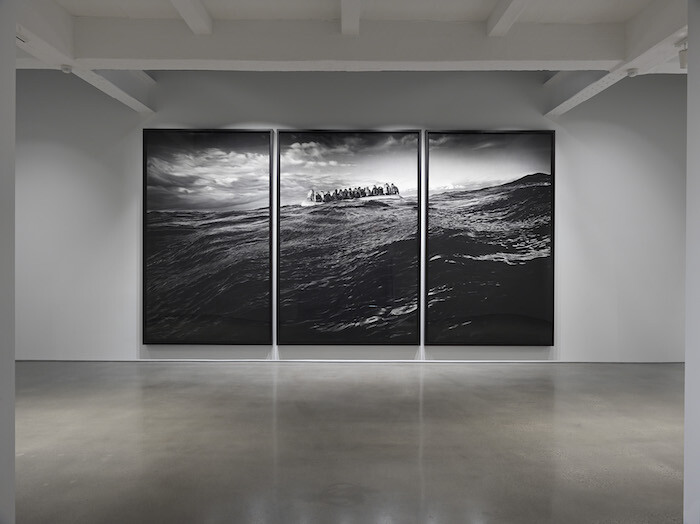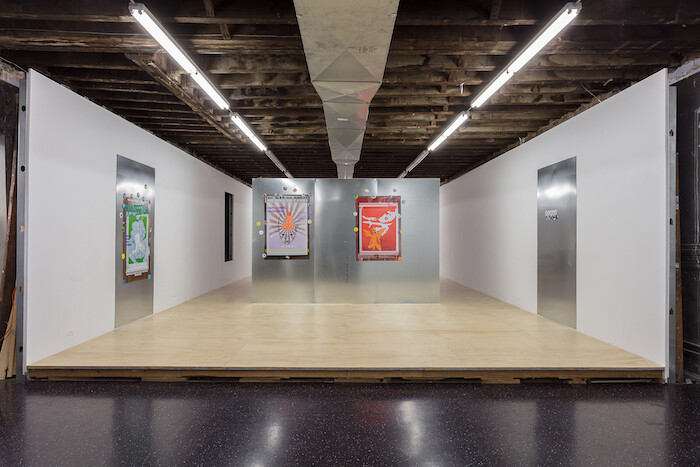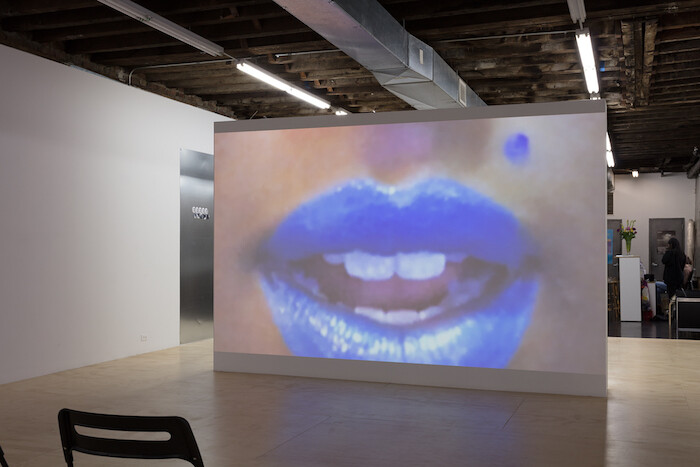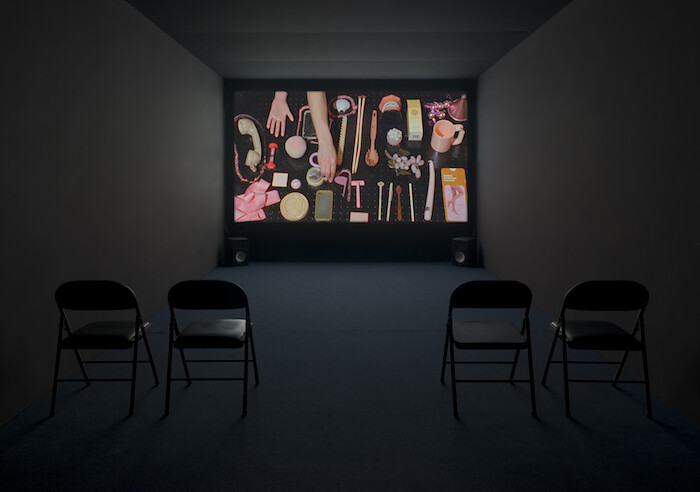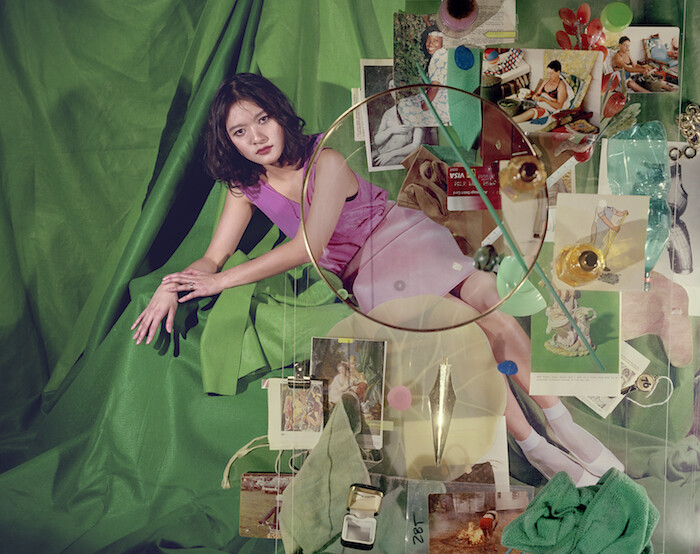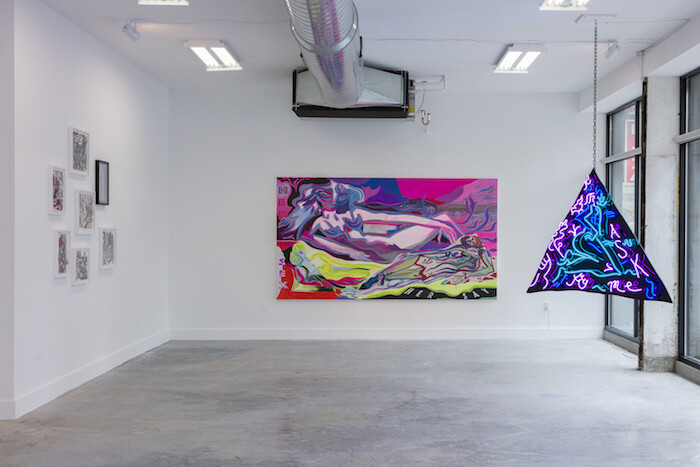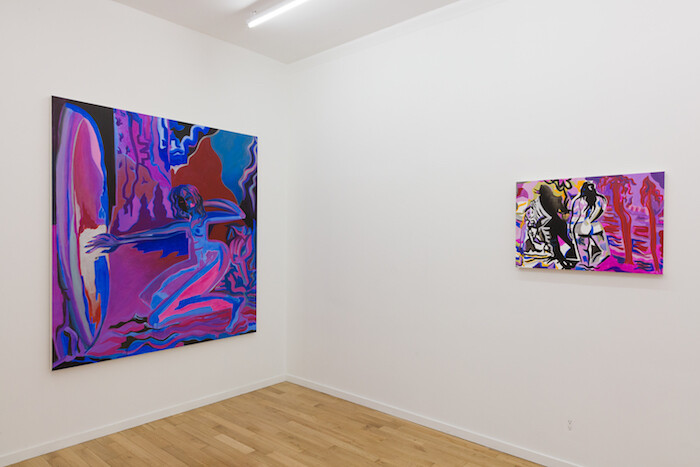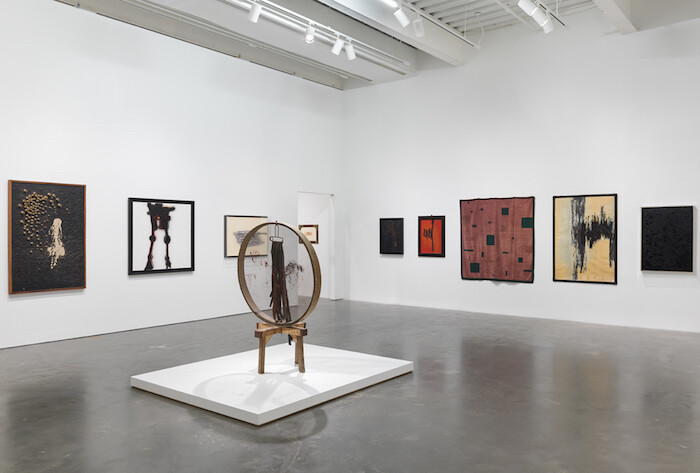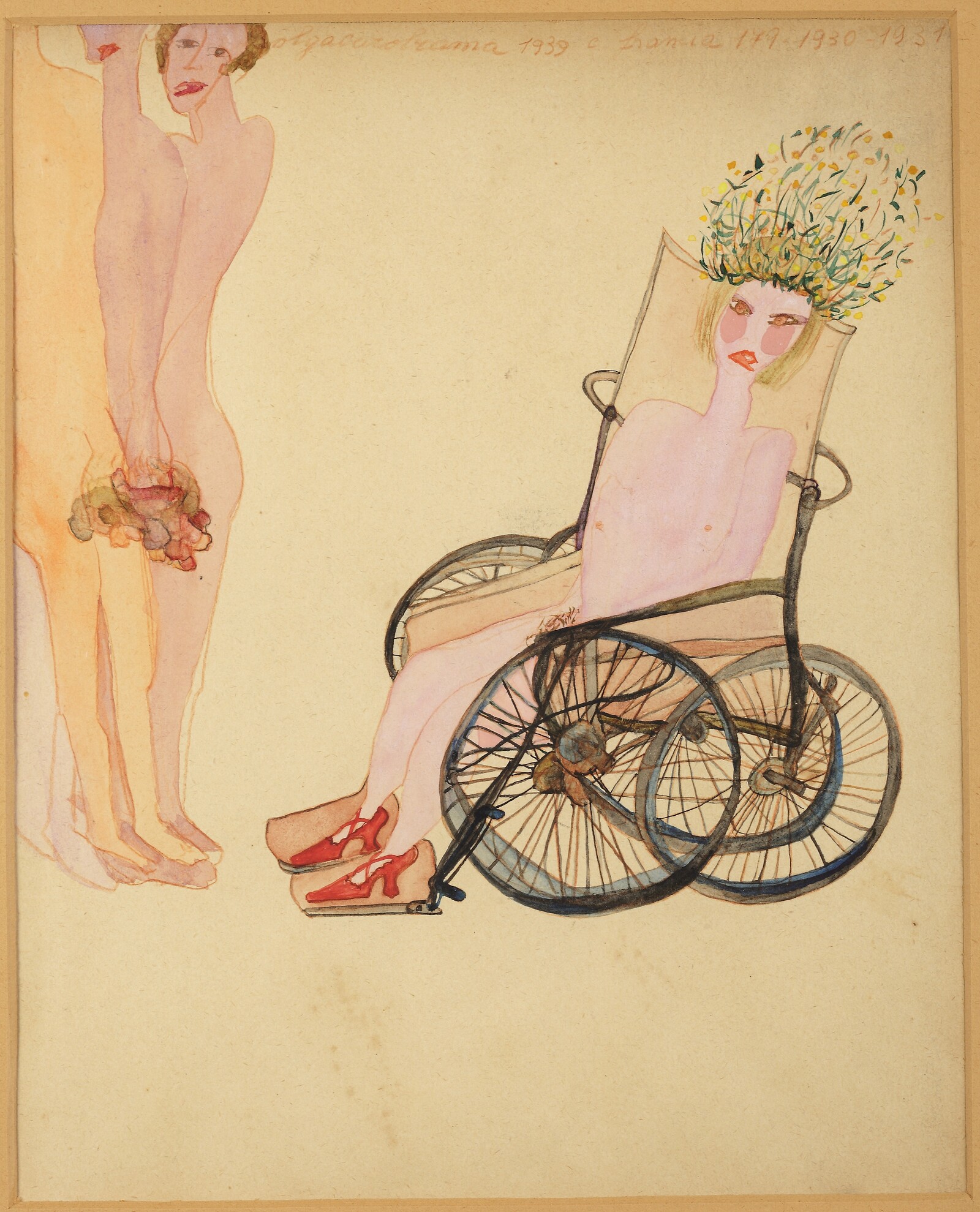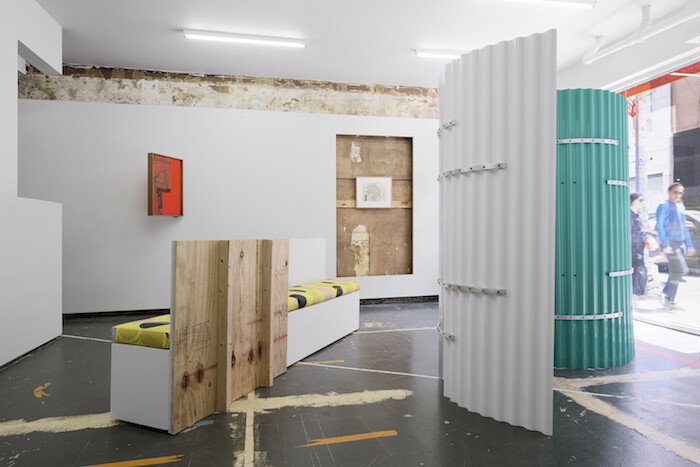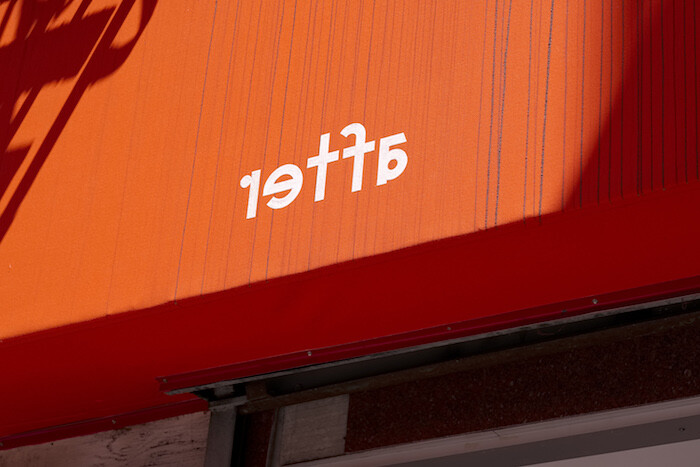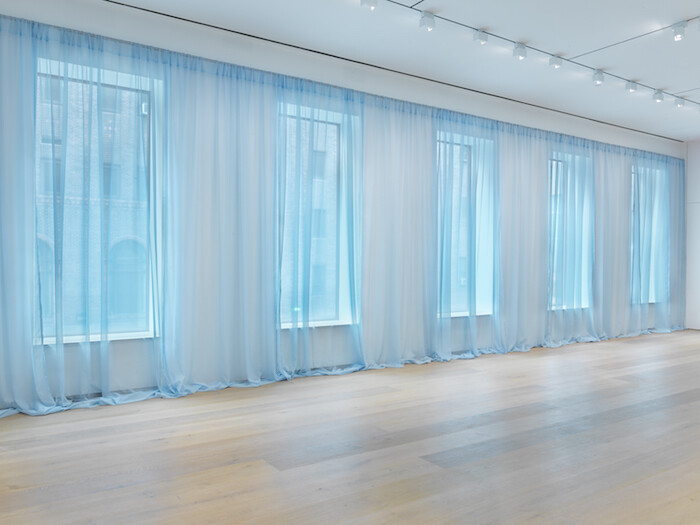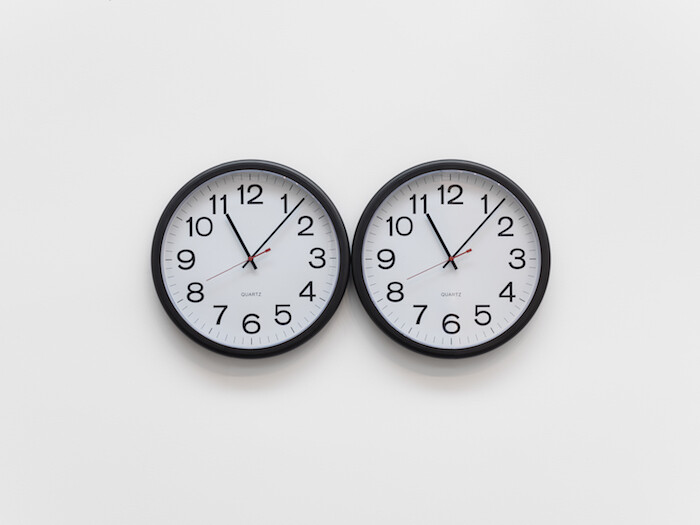As I missed out on international art events this season because New York is so far away, all I could think of was how unlucky their curators are. You work on Venice or Documenta for a year or two or four. You start out researching when there’s a somewhat liberal president in the US and some island off the coast of Europe still considers itself part of the union. Though the war in Syria, the refugee crisis, and economic instability in the EU were already present, there’s still a feeling that this past year has served too many blows. And those large-scale exhibitions, years in the making, all opened to a great unknown.
On Instagram, almost all the photos I see from Venice are of the same works, and I wonder how and if they respond to the current situation, whether there is a way for art not to seem detached. In New York, few of the exhibitions currently on view in commercial galleries and museums focus directly on contemporary politics. At Metro Pictures, Robert Longo’s show, “The Destroyer Cycle,” does just that. It’s comprised of large-scale charcoal-and-graphite drawings of riot cops in full gear, prisoners being led to a CIA black site, and a triptych of migrants in a raft in rough waters. It’s an aestheticized, grand, spectacular view of politics; as such, it is grim (the black-and-white tones of the charcoal, yes, as well as the subjects) but it says little. Longo replicates imagery from the news, from television, or in the case of the triptych Untitled (Raft at Sea) (2016–17), from the cover of a Doctors Without Borders publication, without taking a position beyond inserting an artist’s hand. The look to art history, from the obvious reference to Théodore Géricault’s Raft of the Medusa (1818–1819) to a graphite-and-charcoal-on-paper replica of Titian’s Venus with a Mirror (Untitled [after Titian, Venus with a Mirror, 1555], 2017) only makes these works seem further detached and aestheticized, timeless representation rather than a current preoccupation.
A much more engaged stand can be seen in “A Split During Laughter at the Rally,” Juliana Huxtable’s exhibition at Reena Spaulings. The eponymous video on view includes scenes from a small demonstration in a gentrifying Brooklyn neighborhood, where a number of 20-somethings carry homemade signs and chant the now-classics “No Trump, no KKK, no fascist USA” and “this is what democracy looks like,” then stop at the local coffee shop to discuss these chants. Their well-intentioned naivety is interspersed with interviews with people claiming the rhythms demonstrators sing are appropriated from African American culture, and a narration by Huxtable, complete with her trademark blue lipstick. It’s a layered text—the script gathers from comments on YouTube videos, right-wing radio shows, and scenes from the recent demonstrations—that exposes the fringe the artist is interested in—conspiracy theorists and online trolls—as well as how that fringe mirrors the feebleness of the sense of political agency in contemporary society.
Maybe politics can be found in more nuanced ways, or by handing over the responsibility of seeing the political potential of art to the viewer. Seeing a couple of quick images of a Trump building (not the one on 5th Ave, just one of the other developments, still with a big TRUMP on the façade, still in the requisite garish tones), in Sara Cwynar’s film (16mm transposed to video) Rose Gold (2017) at her exhibition “Rose Gold” at Foxy Production, recalled to me the infamous image of Trump and Nigel Farage in front of the bejeweled elevator in Trump Tower. “They invented this color, rose gold, and I’m mesmerized,” the voiceover goes, “a new object of desire.” The film, though similar in form to so many other recent video artworks in its use of a voiceover steadily reading a script while the images shift in quick jump-cuts, uses this standard presentation to offer up considered, sometimes hilarious, and always fascinating research on economies of desire. Focusing on one color—rose gold, as invented by Apple—in this work, Cwynar brings together reflections on production, consumption, and marketing, but also the history of color and consumer products and the development of photography. The racial bias of film stock, historically optimized for white skin, is challenged here in the bright photographs of the artist’s friend Tracy, which quote old photo studio images and the way our image of history is dominated by photographic tropes.
The photographs of Tracy, a beautiful, young woman of Asian heritage, are both old-fashioned portraits and a challenge of the idea of imaging the female body. Compare that with Longo’s vacant replica of a Titian Venus and remember how far we have come, and yet how much longer we have to go, in releasing the female body from its history of representation. Another artist doing just that is Mira Dancy, who is showing her large-scale paintings of women that do not conform to any art-historical convention of female portraiture at her “Call NOW” exhibition at Chapter NY and in an adjacent exhibition (through Chapter) at 83 Pitt Street. In the latter, Dancy uses the storefront space to introduce a text opening to the street, but what seems most fitting to the location is Dancy’s use of neon, creating intimate portraits by appropriating a form associated with sleaze. Her huge canvases in shades of pink, purple, and black do the exact opposite: neither intimate nor confrontational, they’re a rejection of the representation of women as any kind of empty, standard ideal.
At the New Museum, “Antibodies,” a Carol Rama retrospective, highlights the artist’s preoccupation with the body—her own body and sexuality, and the way the female body is monitored and viewed by men. Rama, whose life is a classic tale of a female artist marginalized by a majority-male art world, died in Turin in 2015, leaving behind a huge body of work shown in a museum survey here for the first time. This exhibition excels in a careful, never-prodding discussion of Rama’s biography and its link to her work, but also to larger societal shifts. It ties Rama’s use of tires and rubber in her work to a time when Turin was becoming a car-manufacturing center; it discusses how personal mad cow disease felt to the artist, whose mentally ill mother was institutionalized and whose father committed suicide when she was twelve. The exhibition is a hallmark of curatorial context: in marking how the personal is always tied to the social, it makes the political relatable.
Down the street, on the orange awning of P!, Céline Condorelli had the word “after” printed in mirror writing. Her exhibition “Epilogue” will be the last in the gallery-project-space-experiment begun by curator and designer Prem Krishnamurthy in 2012. Choosing Condorelli, whose work has long engaged with the architecture and context of the exhibition space, is fitting. Her exhibition is a celebration of the space’s architecture and history rather than a mourning of its end. Condorelli builds a bench made of one of P!’s walls and borrows a 1930 drawing by Herbert Bayer, Extended Field of Vision, which has become iconic in exhibition design. The artist’s work is consistent with what P! stood for: an interest in bringing together art and display in a process that isn’t seamless, that is up for discussion. Condorelli’s show not only does justice to the commitment at P! to redefine what a gallery could be, it also might give it a brief second life: the artist’s upcoming at Stanley Picker Gallery at Kingston University in London will be a continuation of the project at P!.
Back in Chelsea is David Zwirner’s first exhibition of works by Felix Gonzalez-Torres, whose estate is now co-represented by Zwirner and Andrea Rosen. It’s a beautiful display of some of the late artist’s most famous works: light strings are installed in the staircase and gauzy curtains on the row of windows on the second floor; two of the “candy spill” works are on view, including “Untitled” (Portrait of Ross in L.A.) (1991), in which 175 pounds of candy is heaped in a corner, free to take, the diminishing pieces mirroring the artist’s HIV-positive partner’s weight loss as his illness took over. In the ground-floor gallery are “Untitled” (Perfect Lovers) (1987–90), in which two identical wall clocks are hung side by side, synchronized but bound to fall out of synch with passing time, and a billboard work “Untitled” (1995), with a gray, grainy image of a bird flying far in the sky.
A few days ago I saw the new AIDS memorial on West 12th street, designed by architects Studio a+i and including a text piece by Jenny Holzer, who had excerpts from Walt Whitman’s “Song of Myself” engraved onto granite pavement underneath the 18-foot-tall memorial. The 1892 version of the poem begins “I celebrate myself, and sing myself, / And what I assume you shall assume, / For every atom belonging to me as good belongs to you.” Holzer chose this poem because it was “a beauty from a man in full and glad possession of his body,”1 and reading it in the street in front of what used to be St. Vincent’s Hospital, the first in the city to have an AIDS ward, and is now being developed into luxury condominiums, is chillingly effective. It’s a tall order to look to art as a way of making sense of our lives today, a big request of artists to do what few of us can. But it could give us language and images through which to consider, discuss, and maybe reimagine our political predicament. And maybe it can also give us hope. Ambiguous hope, but something nonetheless. At the Gonzalez-Torres show, there are two stacks of white paper (“Untitled,” 1989/1990) placed side by side. The one reads, “Nowhere better than this place”; the other, “somewhere better than this place.”
Gareth Harris, “Jenny Holzer creates Walt Whitman poetry piece for New York Aids memorial,” The Art Newspaper (December 9, 2016): http://theartnewspaper.com/news/jenny-holzer-creates-walt-whitman-poetry-piece-for-new-york-aids-memorial/
